Eco-friendly tiny house construction: Are you tired of living in a cramped apartment or paying sky-high rent for a house that’s too big for your needs? Have you ever dreamt of living a simpler, more sustainable lifestyle, but don’t know where to start?
Look no further than eco-friendly tiny house construction! Tiny houses have become a popular housing trend in recent years, with their small size and minimalist design offering a unique alternative to traditional homes.
But what sets eco-friendly tiny houses apart is their focus on sustainability and reducing our impact on the environment.
From using recycled and locally-sourced materials to incorporating renewable energy sources, eco-friendly tiny house construction offers a wide range of benefits for both the homeowner and the planet.
Not only do they use fewer resources and produce less waste, but they can also help reduce your carbon footprint and save you money on utility bills.
But building an eco-friendly tiny house is not just about being environmentally conscious; it’s also about designing a space that fits your unique lifestyle and needs.
Whether you’re looking for a cozy retreat in the woods or a mobile home to travel the country, the possibilities are endless.

Eco-friendly tiny house construction
Eco-friendly tiny house construction is a growing trend in the world of sustainable living. These tiny homes are designed to minimize environmental impact by using green building materials, energy-efficient systems, and other eco-friendly features.
The benefits of eco-friendly tiny house construction are numerous, ranging from reduced carbon emissions to lower energy bills and a smaller environmental footprint.
One of the most important aspects of eco-friendly tiny house construction is the use of sustainable building materials. This can include recycled materials, reclaimed wood, and locally-sourced materials that minimize transportation emissions.
Builders may also choose to use non-toxic, low-VOC paints and finishes, which improve indoor air quality and reduce harmful emissions. In addition to the materials used, eco-friendly tiny homes are designed to be highly energy-efficient.
This can include using high-quality insulation, energy-efficient windows and doors, and installing solar panels or other renewable energy systems.
Many tiny homes also incorporate rainwater harvesting systems to minimize water usage, and composting toilets to reduce waste. Another benefit of eco-friendly tiny house construction is that it often results in lower energy bills for homeowners.
With highly efficient heating, cooling, and lighting systems, homeowners can save money on their energy bills while also reducing their impact on the environment.
Additionally, many tiny homes are designed to be off-grid or partially off-grid, allowing homeowners to live in remote locations without relying on traditional utility services. Finally, eco-friendly tiny house construction can have a significant impact on reducing carbon emissions.
By using sustainable materials, incorporating energy-efficient systems, and reducing overall energy usage, tiny homes can help reduce greenhouse gas emissions and combat climate change.
In summary, eco-friendly tiny house construction is an excellent way to live sustainably while also enjoying the benefits of a minimalist, low-cost lifestyle.
With a focus on sustainability, energy efficiency, and low environmental impact, these homes offer a compelling alternative to traditional housing options.
If you’re interested in building an eco-friendly tiny home, be sure to work with experienced builders who can help you design and construct a home that meets your specific needs and sustainability goals.
Also see: Tiny Homes Texas
Top pick

Editor’s choice
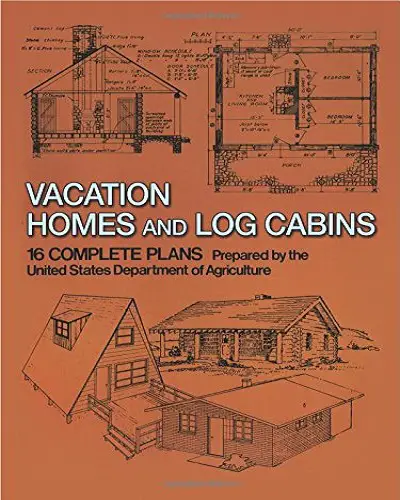
Best value

What is an eco-friendly tiny house?
An eco-friendly tiny house is a small dwelling that is designed and built to have a minimal impact on the environment.
The concept of tiny homes has gained popularity in recent years due to the rising concern for sustainability and the need to reduce our carbon footprint.
An eco-friendly tiny house incorporates environmentally conscious materials, efficient use of resources, and a reduced energy consumption.
One of the most significant advantages of an eco-friendly tiny house is the reduced carbon footprint. Traditional homes consume a significant amount of energy and emit large amounts of carbon dioxide into the environment.
By building and living in an eco-friendly tiny home, individuals can greatly reduce their energy consumption and carbon emissions. This can be achieved through the use of sustainable materials, including recycled and locally sourced materials.
Another important aspect of an eco-friendly tiny house is the efficient use of resources. Tiny homes are built to be functional and maximize the use of space. This means that they are designed to use less energy, water, and other resources than traditional homes.
Eco-friendly tiny houses often incorporate energy-efficient appliances, LED lighting, and water-saving fixtures. Overall, an eco-friendly tiny house is an excellent way to reduce your environmental impact and live a more sustainable lifestyle.
By incorporating sustainable materials and efficient use of resources, you can reduce your carbon footprint and contribute to a healthier planet.
Whether you are looking to downsize, simplify your life, or reduce your impact on the environment, an eco-friendly tiny house may be the perfect solution for you.
Also see: Tiny Homes For Sale Georgia
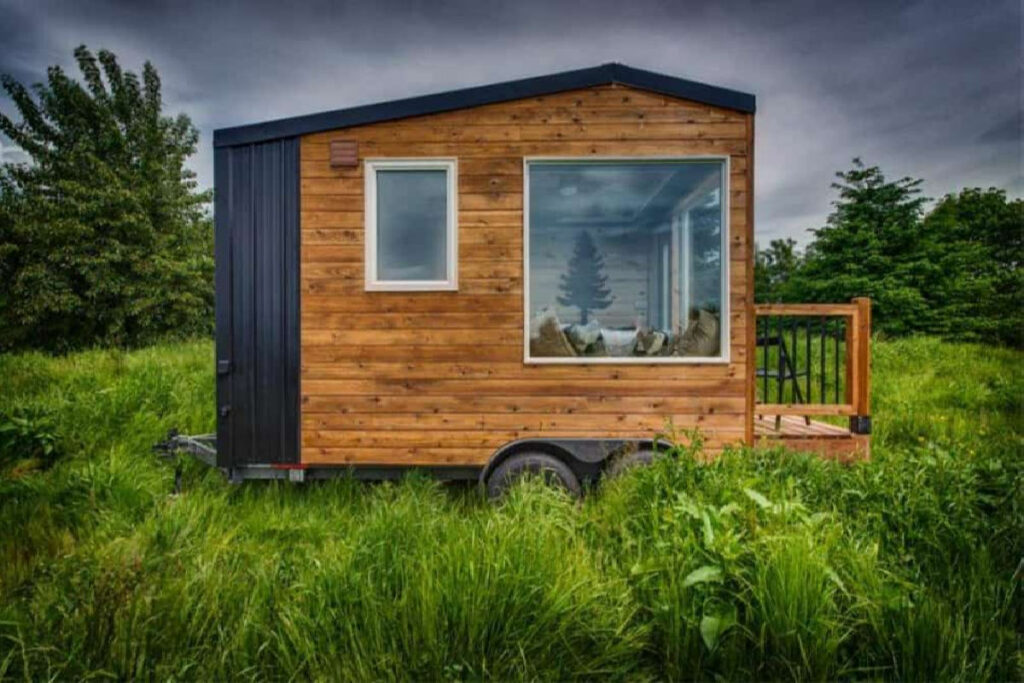
How much will it cost to build an eco-friendly tiny house?
Tiny houses have become increasingly popular over the years, offering a minimalist lifestyle and a smaller environmental footprint. But, how much does it cost to build an eco-friendly tiny house? The answer depends on various factors, such as size, materials used, location, and more.
The average cost to build a tiny house is around $23,000 to $35,000. However, building an eco-friendly tiny house may add an extra $10,000 to $20,000 to the overall cost.
The reason being that eco-friendly materials and appliances can be more expensive than conventional ones. When considering building an eco-friendly tiny house, it’s essential to think about energy efficiency.
Using sustainable materials, such as bamboo or reclaimed wood, can reduce costs while also being environmentally friendly. Additionally, incorporating solar panels or a wind turbine can provide energy without relying on the grid. Water conservation is also crucial in an eco-friendly tiny house.
Installing low-flow toilets, faucets, and showerheads, as well as collecting and reusing rainwater, can save a significant amount of water and money on utility bills. The location of the tiny house can also affect the cost.
Building codes and regulations vary by state and municipality, and some areas may have higher permit fees or require specific eco-friendly features, such as composting toilets or greywater systems.
Building an eco-friendly tiny house can cost more upfront, but the benefits of lower utility bills and reduced environmental impact make it a worthwhile investment. With careful planning and the right materials, an eco-friendly tiny house can be built on a budget.
Also see: Tiny Homes In California
Top pick
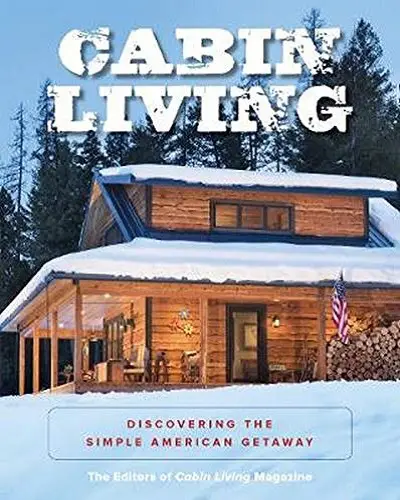
Editor’s choice

Best value
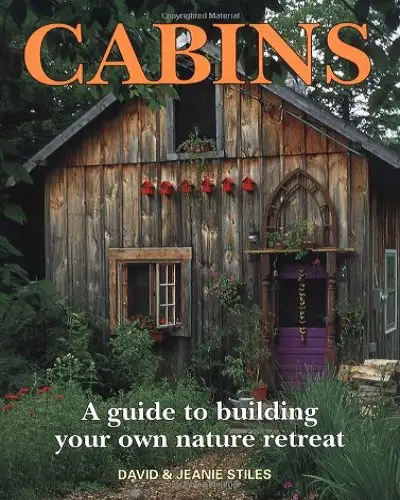
Benefits of building an eco-friendly tiny house
Tiny houses have become a popular choice for those looking to downsize their living space and live a more sustainable lifestyle. In recent years, there has been a growing trend towards building eco-friendly tiny houses that not only reduce our carbon footprint but also provide numerous other benefits.
Here are just a few of the many benefits of building an eco-friendly tiny house. Reduced Environmental Impact One of the most significant benefits of building an eco-friendly tiny house is its reduced environmental impact.
Eco-friendly tiny houses are designed with sustainability in mind, using materials and building techniques that minimize waste, energy consumption, and carbon emissions.
By living in a tiny house, you are consuming less energy, water, and other resources, which helps to reduce your overall carbon footprint. Lower Energy Bills Living in a tiny house means having lower energy bills.
Tiny houses are designed to be energy-efficient, using passive solar design, high-quality insulation, and efficient appliances to reduce energy consumption. With lower energy bills, you can save money and reduce your environmental impact at the same time.
Greater Freedom Living in an eco-friendly tiny house can provide a sense of greater freedom. By living in a smaller space, you are forced to be more intentional about your possessions and prioritize what is truly important.
This can lead to a more fulfilling and satisfying life, free from the stress and clutter of excess possessions. Increased Mobility One of the unique advantages of tiny houses is their mobility.
Many tiny houses are built on wheels, allowing you to take your home with you wherever you go. This can provide greater flexibility and freedom to explore new places and live a more adventurous lifestyle.
Overall, building an eco-friendly tiny house can provide a range of benefits, from reduced environmental impact to lower energy bills and increased freedom and mobility.
Whether you are looking to downsize your living space, reduce your carbon footprint, or live a more intentional and fulfilling life, an eco-friendly tiny house can be an excellent choice. So why not consider building your own tiny house and enjoy the many benefits it has to offer?
Also see: Tiny Homes Oregon
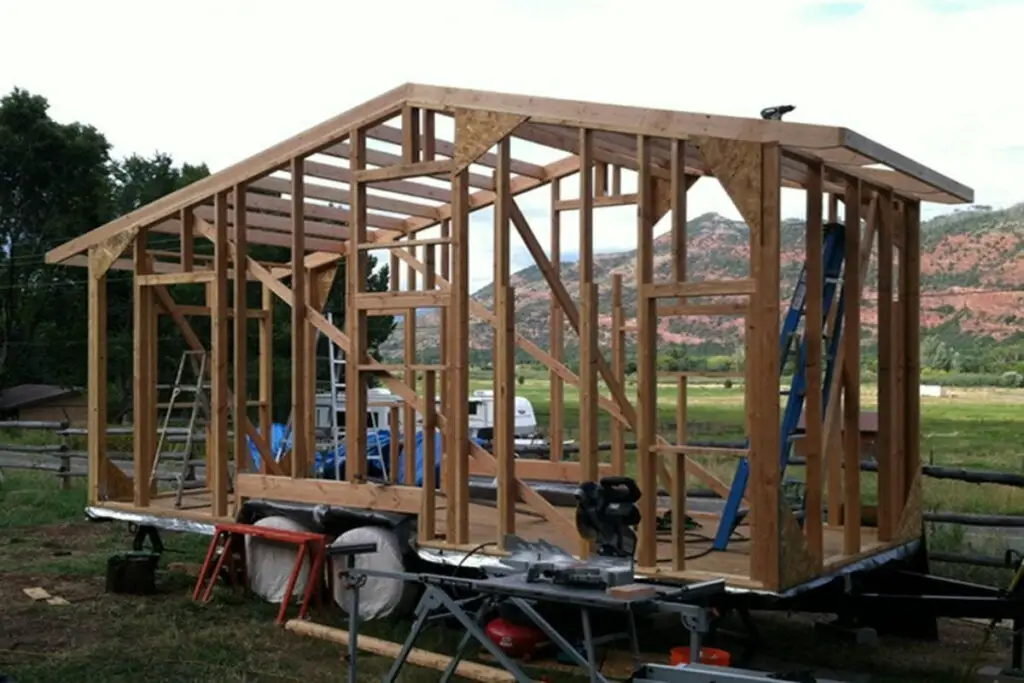
10 eco-friendly tiny house must-have
1. Solar energy – Must have
As the world becomes more aware of the environmental impact of traditional power sources, alternative energy options are gaining popularity. For those who are looking to live a more sustainable lifestyle in a tiny house, solar energy is a must-have.
Not only is it environmentally friendly, but it also provides an independent power source that is both reliable and cost-effective.
With advances in technology, solar energy is more accessible than ever before. Installing solar panels on a tiny house is a relatively simple process and can greatly reduce or even eliminate reliance on traditional power sources.
By harnessing the power of the sun, tiny house dwellers can reduce their carbon footprint and live a more eco-friendly lifestyle. In addition to being good for the planet, solar energy can also save tiny house dwellers money in the long run.
While the initial investment may seem steep, the cost of solar panels has decreased significantly in recent years, and the savings on monthly energy bills can quickly offset the upfront cost. For those who value self-sufficiency and sustainability, solar energy is a must-have for any tiny house.
2. Composting toilets
If you’re considering building a tiny home and want to live a more sustainable lifestyle, then a composting toilet is a must-have. Not only do they save water, but they also turn human waste into nutrient-rich compost that can be used in your garden.
Plus, they’re odorless and easy to maintain. Composting toilets are an eco-friendly solution that will make your tiny house even greener.
3. Natural lighting from outside
When it comes to building an eco-friendly tiny house, natural lighting is a key factor to consider. Not only does it reduce energy consumption by minimizing the need for artificial lighting. But it also creates a healthier living environment by allowing fresh air and sunlight to enter.
Incorporating large windows and skylights into the design will not only enhance the aesthetic appeal but also make the space feel more spacious and inviting. So, if you’re planning to build a tiny house, make sure to prioritize natural lighting from outside.
4. Low flow showerhead
If you’re living in a tiny house, you know that every inch of space and every drop of water counts. One way to be more eco-friendly and save on your water bill is by installing a low flow showerhead.
These showerheads use significantly less water than traditional showerheads, without compromising on water pressure.
With a low flow showerhead, you can enjoy a refreshing shower while being mindful of your environmental impact.
5. Low watt LED lighting
If you’re looking to reduce your carbon footprint and save money on your electricity bills, consider installing low watt LED lighting in your tiny house.
LED lights are energy-efficient and have a longer lifespan compared to traditional light bulbs. This means you’ll spend less on electricity and replacement bulbs.
Additionally, LEDs don’t emit heat like incandescent bulbs, which can help keep your tiny house cooler during hot summer months.
Top pick
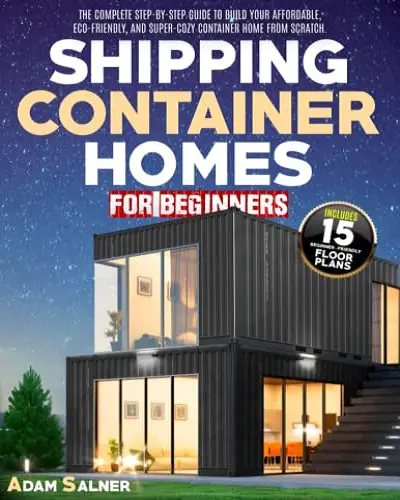
Editor’s choice

6. Eco-Friendly insulation
Building an eco-friendly tiny house is a great way to minimize your carbon footprint and reduce your impact on the environment. And when it comes to insulation, using eco-friendly materials is a must-have.
There are plenty of options available, such as cellulose, recycled denim, and sheep’s wool, which not only provide excellent insulation but also have a much lower environmental impact than traditional materials like fiberglass.
By choosing eco-friendly insulation, you can create a cozy and comfortable home while also doing your part to protect the planet.
7. Recycled materials
If you’re considering building an eco-friendly tiny house, using recycled materials should be at the top of your list. By repurposing materials like wood, metal, and glass, you can reduce your carbon footprint and minimize waste.
Plus, incorporating recycled materials can add character and charm to your tiny house, making it truly unique. From salvaged windows to reclaimed lumber, the possibilities are endless.
Go green with recycled materials and create a sustainable home that’s both beautiful and environmentally conscious.
8. Rainwater collection system
If you’re living in a tiny house, you’re probably already committed to an eco-friendly lifestyle. But have you considered adding a rainwater collection system to your setup? Collecting rainwater not only reduces your reliance on the grid, but it can also save you money on utility bills.
With a little DIY know-how and some basic materials, you can easily install a rainwater collection system and reap the benefits of this sustainable solution.
9. Renewable flooring
Using renewable flooring is a must-have for eco-friendly tiny houses. These types of flooring are made from sustainable materials like bamboo, cork, and reclaimed wood.
Unlike traditional flooring, renewable flooring has a smaller carbon footprint and can be recycled or repurposed. In addition, they are durable, easy to maintain, and can enhance the natural aesthetic of your tiny house.
By choosing renewable flooring, you can reduce your environmental impact while creating a beautiful and sustainable living space.
10. Energy-efficient appliances
If you’re looking to build an eco-friendly tiny house, choosing energy-efficient appliances is a must. These appliances use less energy, reducing your carbon footprint and saving you money on your energy bills.
Look for appliances with an ENERGY STAR rating, which means they meet strict energy efficiency guidelines set by the U.S. Environmental Protection Agency.
With a little research and investment, you can create an eco-friendly tiny home that’s comfortable, sustainable, and affordable.
Also see: How Much Do Tiny Homes Weigh
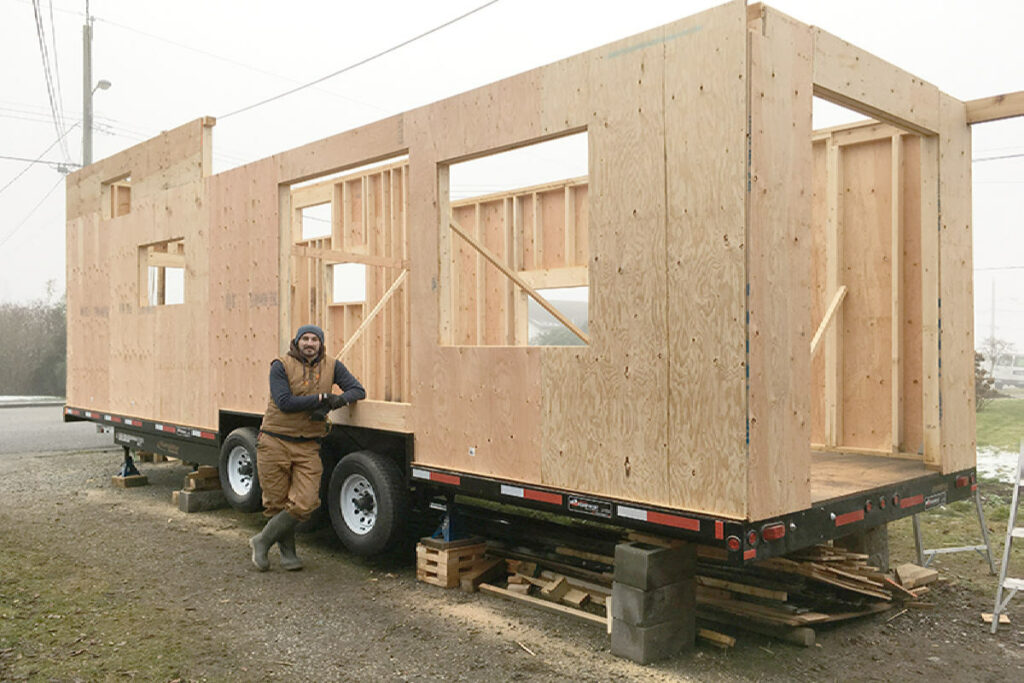
What are the pros of an eco-friendly tiny house?
Tiny houses have been gaining popularity in recent years as a solution to the problems of housing affordability and sustainability. An eco-friendly tiny house takes this trend a step further by incorporating environmentally conscious design and building practices.
Here are some of the pros of living in an eco-friendly tiny house:
1. Lower carbon footprint: An eco-friendly tiny house is designed to use fewer resources, which means less waste and less pollution. It typically requires less energy to heat and cool, and it may incorporate renewable energy sources like solar panels or wind turbines.
2. Reduced cost of living: A smaller living space means fewer expenses on utilities, maintenance, and other costs associated with homeownership. Additionally, an eco-friendly tiny house may be built with sustainable and recyclable materials, which could save money in the long run.
3. Increased mobility: Tiny houses are often built on wheels, making them easy to move from one location to another. This means that you can take your home with you wherever you go, reducing the need for a new home every time you relocate.
4. Simpler lifestyle: With less space comes less stuff. Living in a tiny house encourages a minimalist lifestyle, which can reduce stress and promote a greater focus on experiences and relationships rather than material possessions.
5. Connection to nature: Many eco-friendly tiny houses are built with large windows, skylights, and outdoor spaces that connect residents to the natural world around them. This can promote a greater sense of well-being and a more sustainable lifestyle.
An eco-friendly tiny house offers numerous benefits, including a lower carbon footprint, reduced cost of living, increased mobility, simpler lifestyle, and connection to nature. These advantages make it an appealing option for those seeking a sustainable and minimalist lifestyle.
Also see: Can Tiny Homes Withstand Hurricanes
Top pick

Editor’s choice

What are the cons of an eco-friendly tiny house?
Eco-friendly tiny houses have become increasingly popular in recent years due to their small footprint and minimal impact on the environment. These tiny homes are often constructed with sustainable materials and designed to maximize energy efficiency.
While there are many advantages to living in an eco-friendly tiny house, there are also some potential drawbacks that should be considered before making the decision to downsize.
One of the main cons of an eco-friendly tiny house is the limited living space. While this is often viewed as a positive aspect, as it encourages a minimalist lifestyle.
It can also be challenging for individuals or families who are used to more space. Storage can be limited, and it may be difficult to find room for all of your belongings.
Another potential drawback is the lack of privacy. With limited space, it may be difficult to find a private area to retreat to, and noise can be an issue. Additionally, entertaining guests can be challenging due to the limited space.
Another consideration is the cost. While eco-friendly tiny houses can be affordable compared to traditional homes, they can still be costly to build or purchase. Additionally, some areas have zoning regulations that make it difficult or impossible to build a tiny home.
Finally, the limited space can make it difficult to accommodate changes in your lifestyle. For example, if you have children or decide to start a family, you may quickly outgrow your tiny home.
Eco-friendly tiny houses have many advantages, but there are also some potential drawbacks that should be considered before making the decision to downsize. Ultimately, it’s important to weigh the pros and cons and decide what’s best for you and your lifestyle.
Also see: Tiny Homes You Can Pull With A Truck
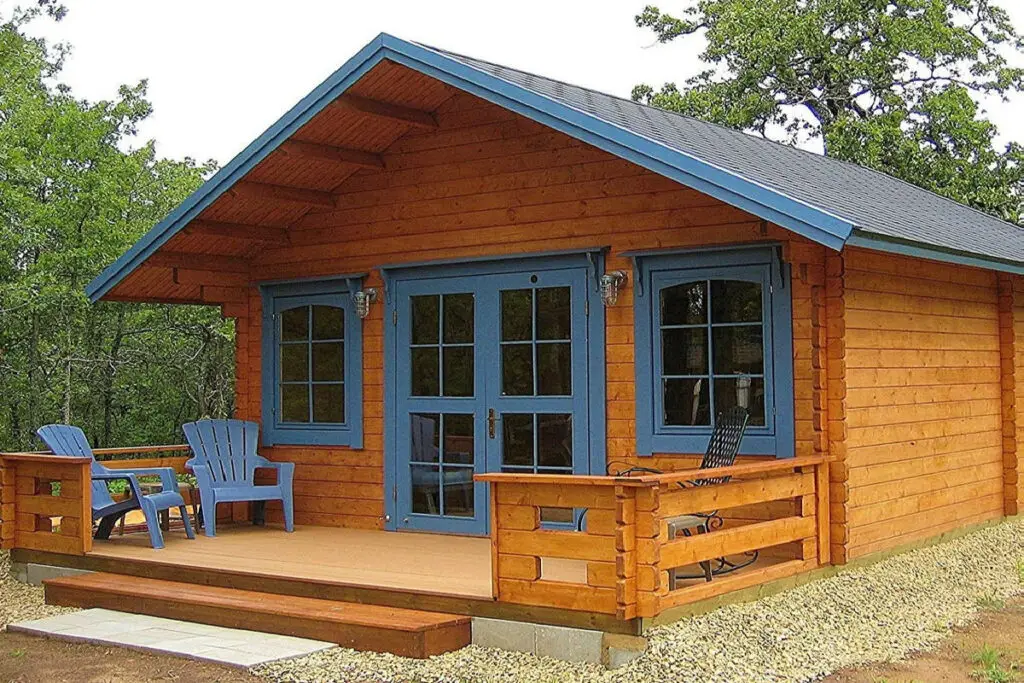
FAQ
1. What are the benefits of building an eco-friendly tiny house?
Eco-friendly tiny houses offer sustainability, cost-effectiveness, mobility, and a simpler lifestyle.
2. What are some eco-friendly materials used in tiny house construction?
Some eco-friendly materials used in tiny house construction are reclaimed wood, bamboo, and recycled metal.
3. How much does it cost to build an eco-friendly tiny house?
The cost to build an eco-friendly tiny house varies, but can range from $10,000 to $150,000+.
4. What are some eco-friendly heating and cooling options for tiny houses?
Some eco-friendly heating and cooling options for tiny houses include mini-split systems, radiant flooring, and passive solar design.
5. How can I make my tiny house more energy-efficient?
Insulate walls and roof, use LED lights, install efficient appliances, and consider renewable energy sources.

Conclusion
In conclusion, the rise of eco-friendly tiny house construction is not just a trend, but a conscious choice towards a sustainable lifestyle. As more people are becoming aware of the impact of their actions on the environment.
Tiny homes are becoming a popular solution to minimize carbon footprints and reduce waste. By using sustainable materials and implementing energy-efficient systems, eco-friendly tiny homes not only reduce environmental harm but also lower living costs.
Moreover, their compact size promotes a minimalist lifestyle, encouraging people to consume less and live more intentionally. While the concept of living in a tiny house may seem intimidating at first, the benefits are undeniable.
Tiny homes provide a sense of freedom and simplicity, allowing individuals to live a fulfilling life without the burden of a mortgage or excessive belongings. Moreover, they offer a unique opportunity to live closer to nature, promoting a deeper connection to the environment.
In summary, eco-friendly tiny house construction is a creative and practical solution towards a more sustainable future.
With their compact size, affordable cost, and efficient design, they offer a new way of living that benefits both individuals and the planet. So why not consider joining the tiny house movement and embrace a greener, simpler lifestyle today?
Also see: Can Tiny Homes Be Built On A Foundation

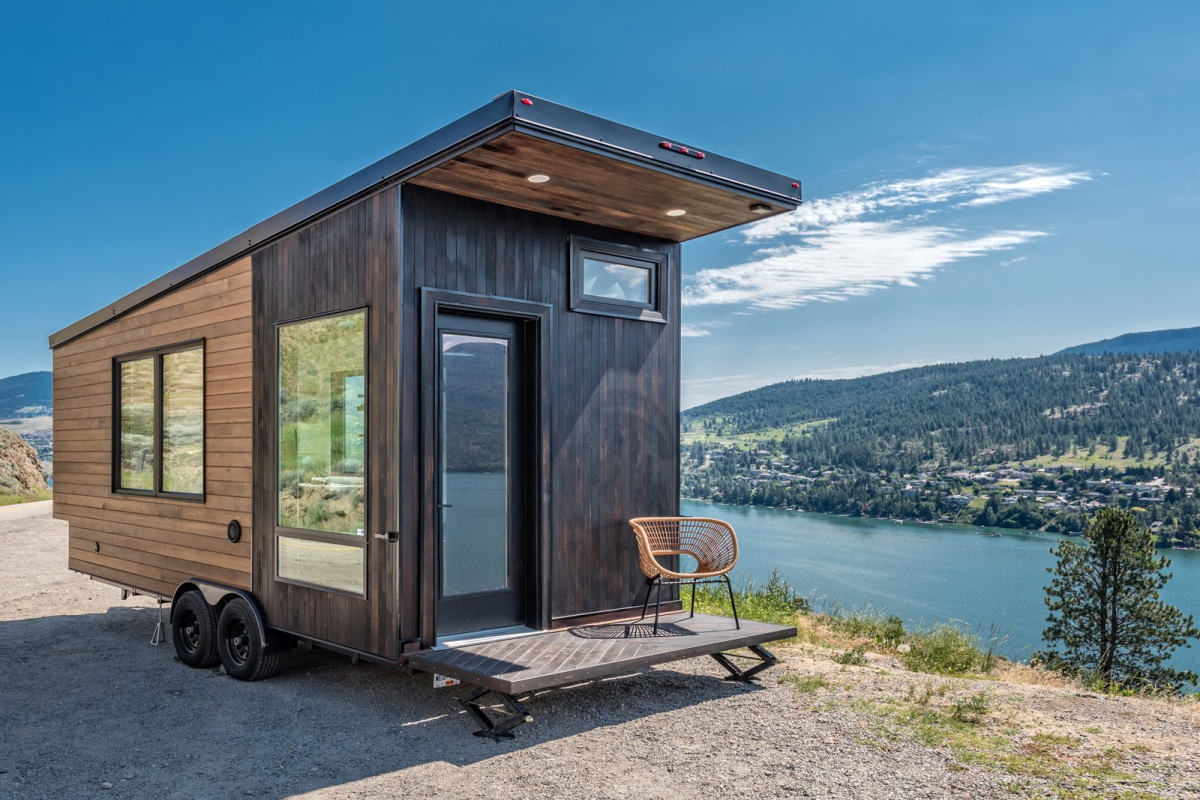
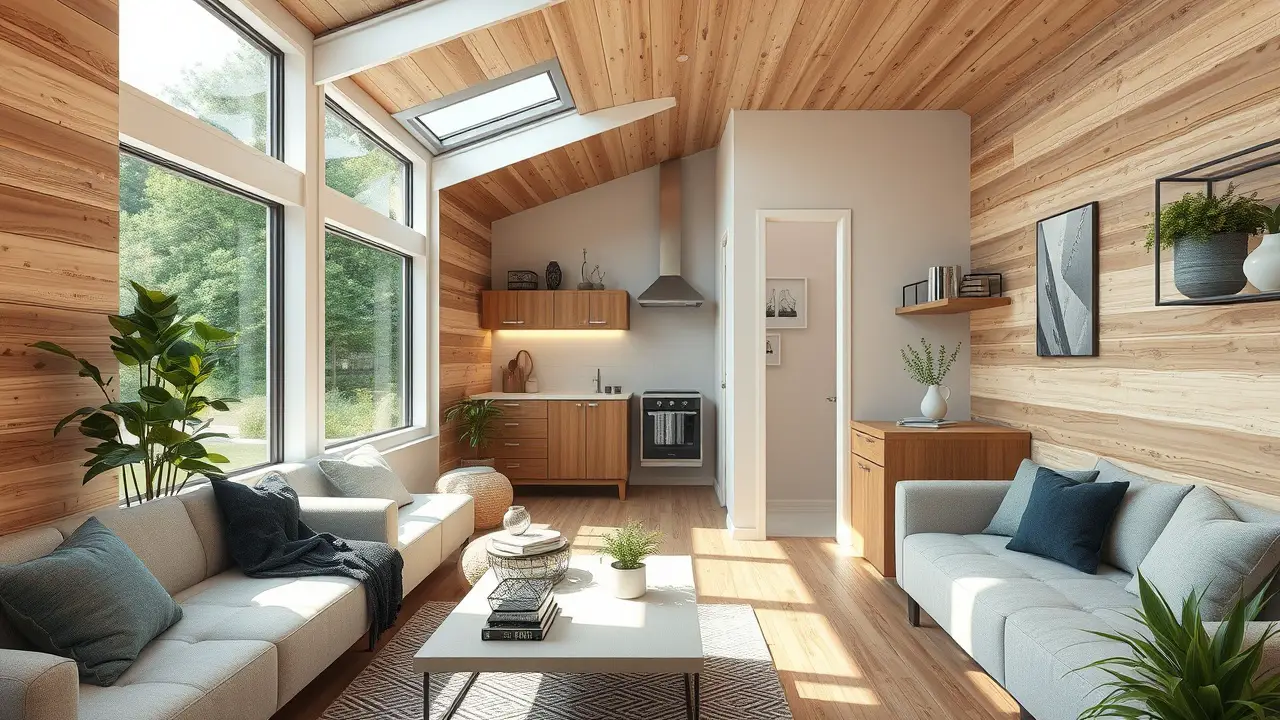
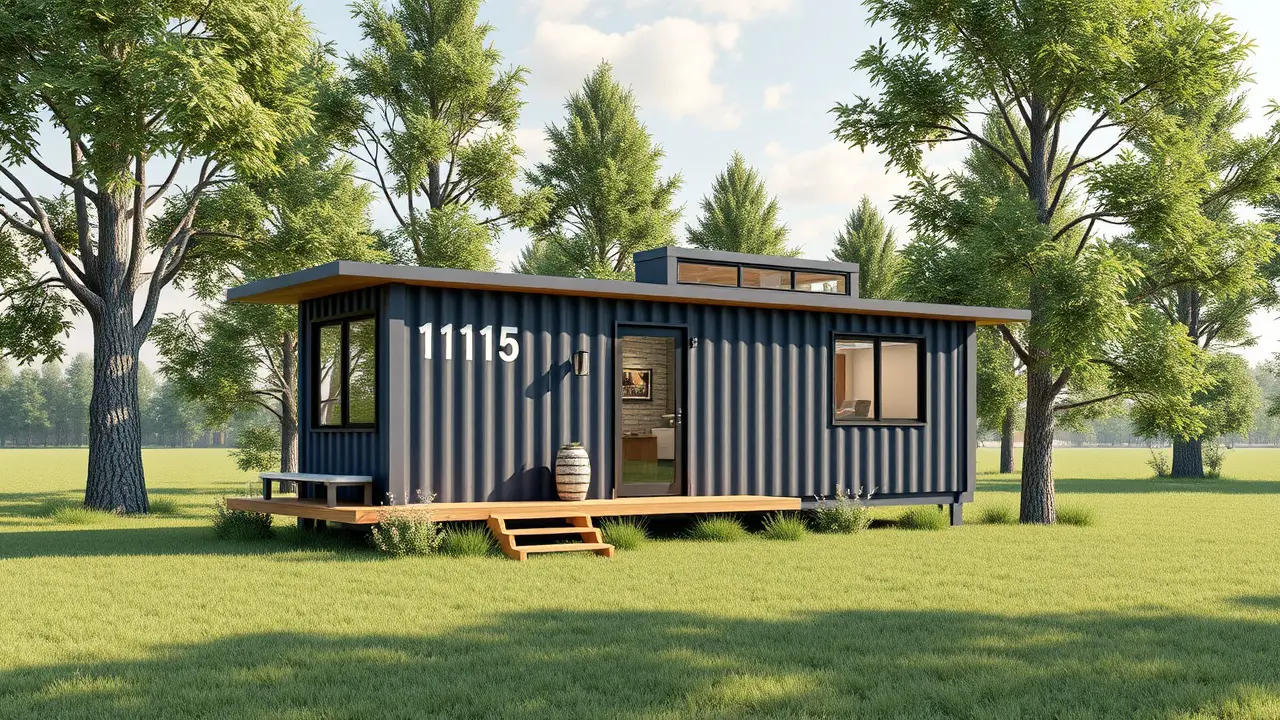
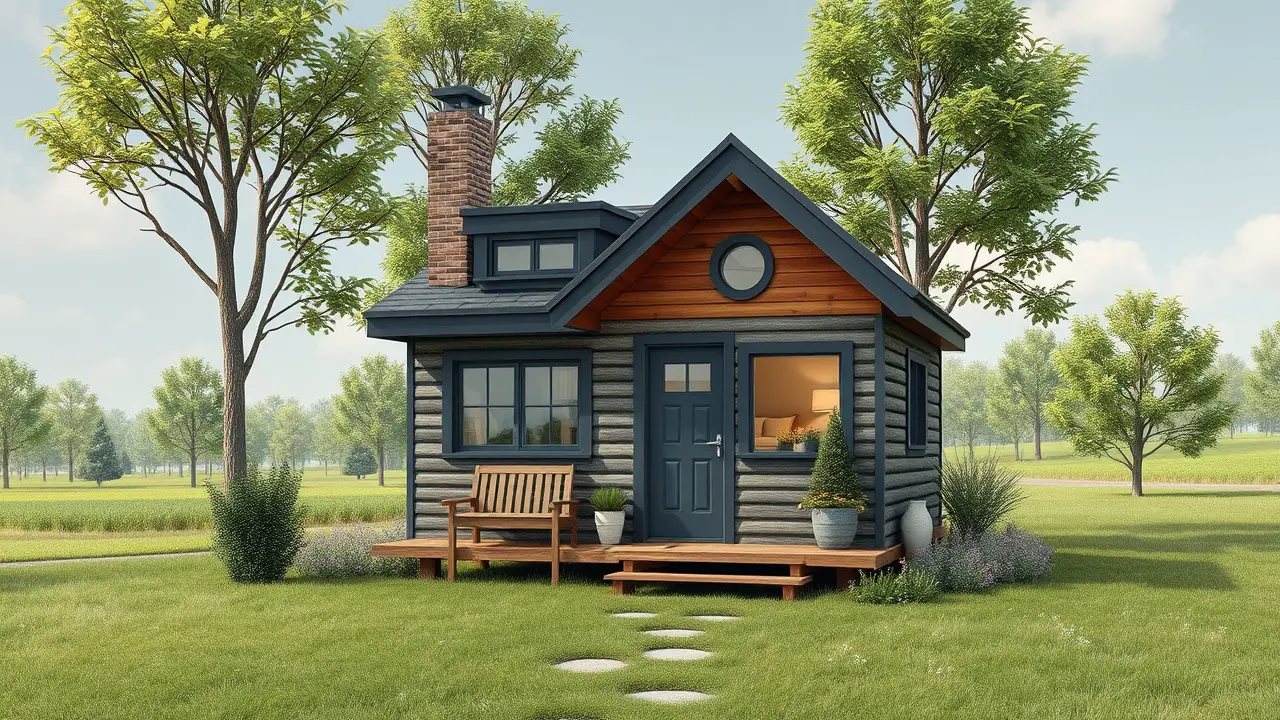
Leave a Reply